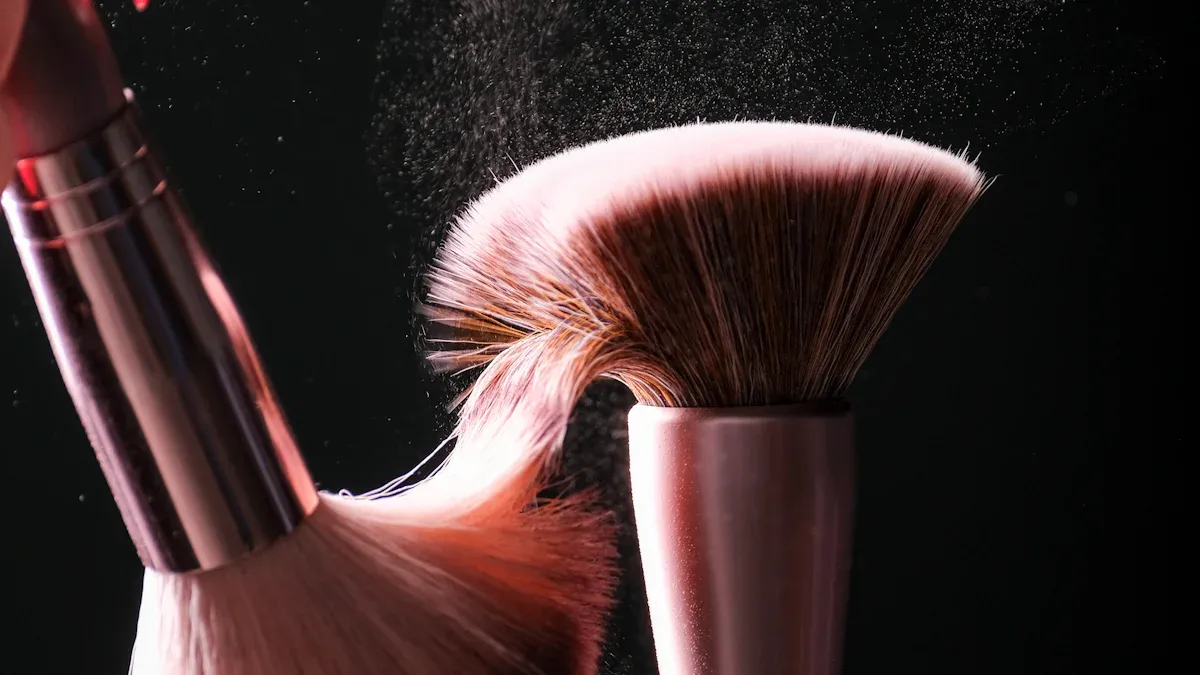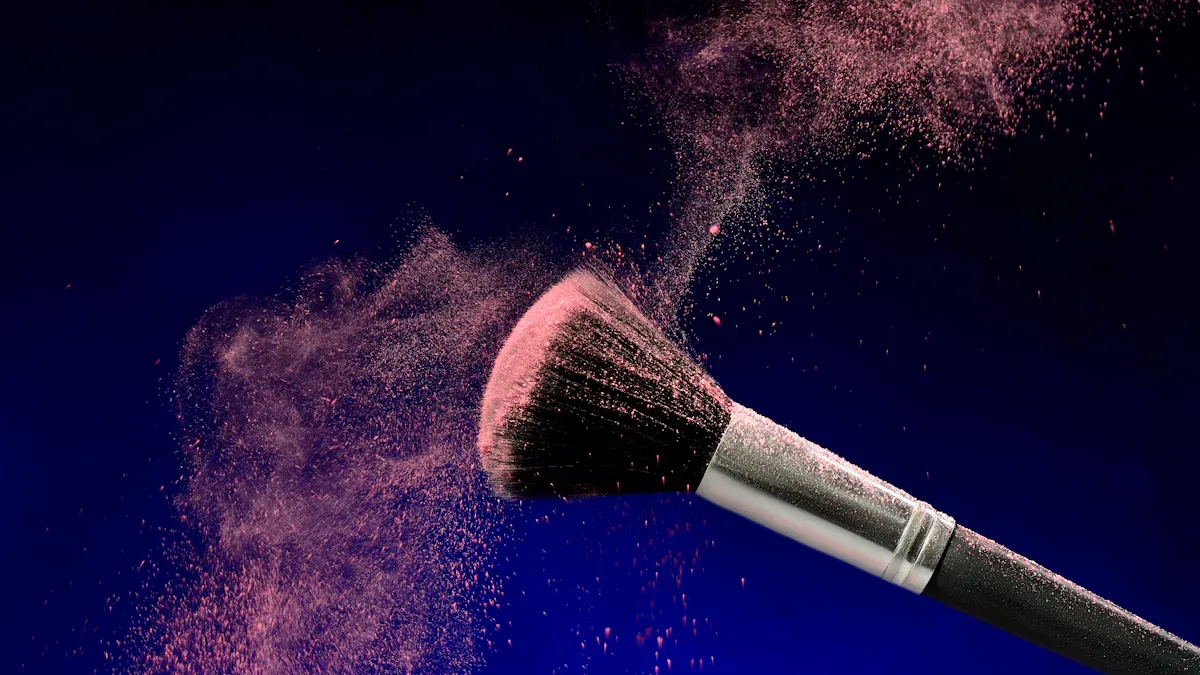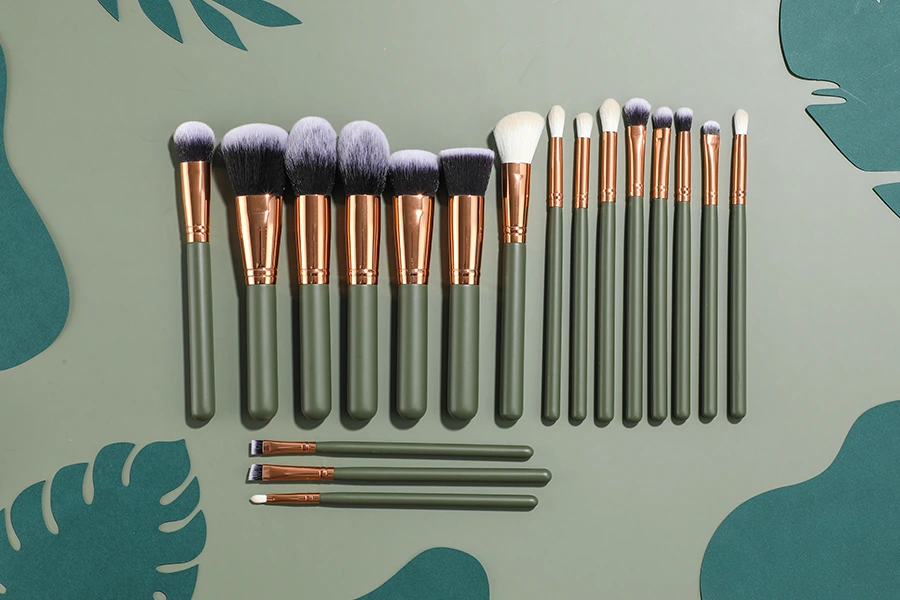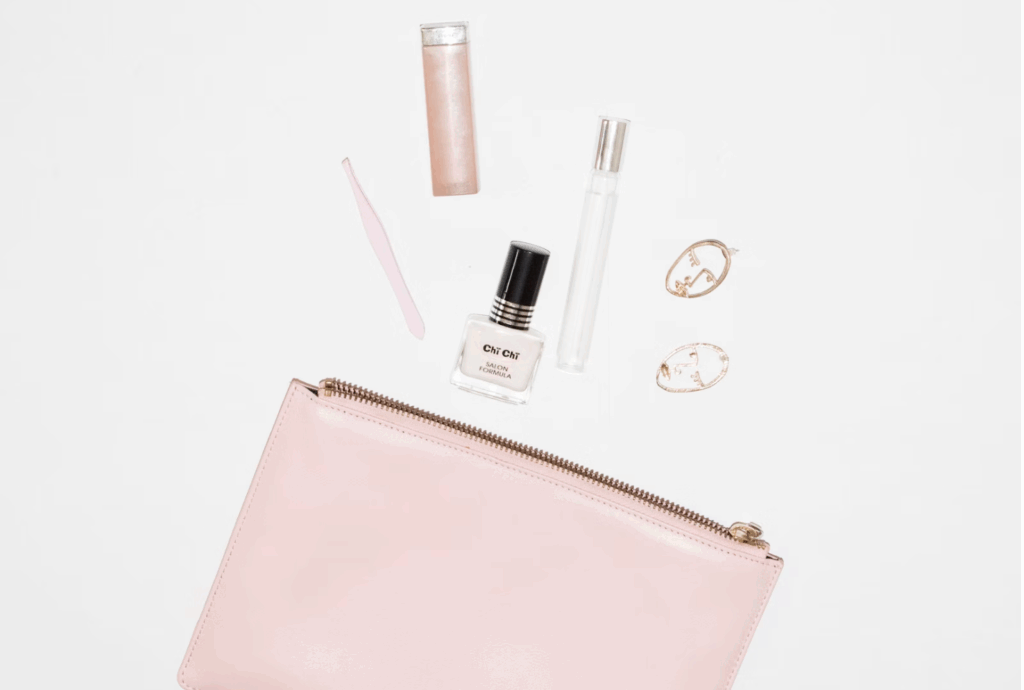
Ever grabbed a brush that left your face powder looking patchy or uneven? You’re not alone! Choosing brushes can feel confusing, but finding the right makeup brushes for your skin type makes all the difference. You want a brush that feels soft, fits your routine, and works with your skin. The type of bristles and the shape of the brush affect how your powder sits on your skin. The perfect powder brush helps you get that smooth, natural finish every time
Why Brush Choice Matters
Skin Comfort
You want your makeup routine to feel good, not just look good. The way a brush feels on your skin can make a big difference. Researchers have tested different brushes and found that soft, smooth bristles feel much nicer than stiff or rough ones. Here’s a quick look at what they found:
Factor | Brush Type/Condition | Effect on Skin Comfort |
|---|---|---|
Smooth (goat hair) | Most pleasant | |
Hybrid (pig hair) | Medium comfort | |
Rough (synthetic plastic) | Least pleasant | |
Skin Treatment | Tegaderm film | Less pleasant |
Calamine/Emollient/Untreated | No big change | |
Velocity | Slow to fast strokes | Some effect, but less than stiffness |
Soft brushes, especially those made with smooth natural hair, feel gentle and pleasant on your skin. Stiff or rough brushes can feel scratchy and uncomfortable. When you choose a powder brush, think about how it feels on your face. A soft brush makes your makeup routine relaxing and enjoyable.
Powder Brush Materials

Synthetic Bristles
You might notice that many new brushes use synthetic bristles. These bristles come from materials like nylon or polyester. They feel smooth and firm. If you have oily skin, a synthetic brush works well because it does not soak up much product. This means you get a smooth, even layer of powder without clumping. Synthetic brushes, like the MAC 217S, have tightly packed bristles. They help you pack on color and give you a precise look. You can use them for both powder and cream products. The firmer bristles make it easy to control where your makeup goes. However, these brushes do not blend as softly as natural ones. You might find the finish a bit more focused and less diffused.
Tip: If you want a brush that is easy to clean and works well with oily skin, try a synthetic option.
Natural Bristles
Natural bristles come from animal hair, such as goat or squirrel. These brushes feel soft and fluffy. If you have dry or sensitive skin, a natural brush feels gentle and smooth. The bristles pick up powder easily and blend it out for a soft, airbrushed finish. Brushes like the Hakuhodo J142 have springy, flexible bristles that help you blend powder over a larger area. This makes your makeup look natural and even. Natural brushes do absorb more product, so you may need to use a bit more powder. They work best with dry products, not creams or liquids. If you want a gentle touch and a blended look, a natural brush is a great choice.
Testing a Powder Brush

Softness Check
You want your powder brush to feel soft on your skin. No one likes a scratchy brush! When you shop in-store, gently sweep the brush across the back of your hand or your wrist. If it feels smooth and gentle, that’s a good sign. If it feels rough or pokes your skin, try a different one. A soft brush helps you blend powder without irritation.
If you shop online, check reviews. Many people will mention if the brush feels soft or scratchy. Look for words like “cloud-like” or “velvety.” These clues help you pick a brush that feels great every day.
Tip: A soft brush works best for sensitive skin. It also helps your powder look smooth and natural.
Handle Grip
A good grip makes your makeup routine easier. Hold the brush in your hand. Does it feel balanced? Is the handle too heavy or too light? You want a handle that feels comfortable and steady. If the brush slips or feels awkward, you might not get the best results.
Best Powder Brush for Skin Types
Choosing the right powder brush for your skin type can make your makeup look smoother and feel better. Let’s break down what works best for each skin type so you can find your perfect match.
Oily Skin
If you have oily skin, you probably want a brush that helps control shine and keeps your makeup in place. Synthetic bristles work best for you. These bristles do not soak up oil or product, so you get a clean, even layer of powder every time. Look for a brush with medium density. This type picks up enough powder to set your makeup but does not leave your skin looking cakey. A slightly tapered shape helps you reach tricky spots like the sides of your nose.
Tip: Wash your brush often. Synthetic bristles are easy to clean, which helps prevent breakouts.
Dry Skin
Dry skin needs a gentle touch. You want a brush that feels soft and smooth, so it does not irritate your skin or make dry patches stand out. Natural bristles are a great choice for you. They feel fluffy and help blend powder without pulling at your skin. Choose a brush with a loose, fluffy shape. This style spreads powder lightly and avoids a heavy look.
Try a brush made from goat or squirrel hair for extra softness.
Use a large, round brush to cover your face quickly and evenly.
Note: Natural bristles need gentle cleaning. Use a mild soap and let your brush air dry.
Sensitive Skin
Sensitive skin can react to rough brushes or harsh materials. You want a powder brush that feels like a cloud on your face. Look for natural bristles with extra-soft tips. A fluffy, rounded brush works best because it glides over your skin without causing redness or irritation. Avoid brushes with stiff or scratchy bristles.
Test the brush on your wrist before using it on your face.
Choose a brush with a comfortable handle so you do not press too hard.
Callout: If you have allergies, check the brush label. Some natural bristles come from animals, so make sure you do not react to the material.
Combination Skin
Combination skin can feel oily in some spots and dry in others. You need a brush that balances both needs. A synthetic and natural bristle mix works well for you. This type gives you control and softness at the same time. Pick a brush with medium density and a domed shape. The domed tip helps you blend powder where you need it most, like your T-zone, while still being gentle on dry areas.
Use a medium-sized brush for better control.
Tap off extra powder before applying to avoid buildup.
Tip: Try different brushes on different parts of your face. You might like a denser brush for your forehead and a fluffier one for your cheeks.
No matter your skin type, the right powder brush helps you get a smooth, even finish. Take a few minutes to match your brush to your skin’s needs, and you’ll see the difference every day.
Ready to pick your perfect powder brush? Use this checklist to make sure you get the best match for your skin and style. You can even save this list on your phone for your next beauty shopping trip!
FAQ
How often should you clean your powder brush?
You should clean your powder brush once a week. This keeps your skin healthy and helps your makeup look smooth. Use gentle soap and let the brush air dry.
Can you use a powder brush for applying blush?
Yes, you can use a powder brush for applying blush. Just pick a smaller, fluffy brush for better control. Tap off extra powder before you sweep it on your cheeks.
What is the difference between a powder brush and a contour brush?
A powder brush has a round, fluffy shape for even coverage. A contour brush has a slanted or narrow tip. You use a contour brush to shape your face and add definition.
How do you stop your brush from shedding?
Check the bristles before you buy. Gently pull on them. If they come out, try another brush. Wash your brush gently and let it dry flat to help prevent shedding.


















